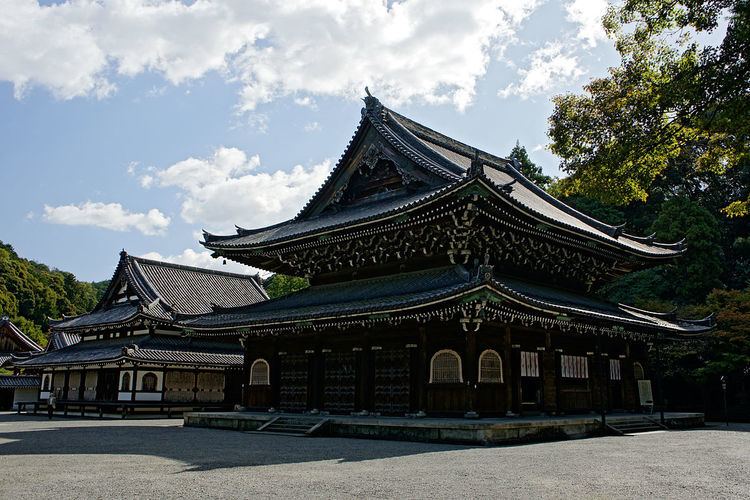Phone +81 75-561-1551 | Burials Princess Yoshiko | |
 | ||
Similar Unryū‑in, Tōfuku‑ji, Imakumano Kannon‑ji, Chishaku‑in, Tōfukuji Station | ||
Wadaiko challenge 2010 kyoto senny ji
Sennyū-ji (泉涌寺, Sennyū-ji), formerly written as Sen-yū-ji (仙遊寺, Sen'yū-ji) , is a Buddhist temple in Higashiyama-ku in Kyoto, Japan. For centuries, Sennyū-ji was a mortuary temple for aristocrats and the imperial house. Located here are the official tombs of Emperor Shijō and many of the emperors who came after him.
Contents
History
Sennyū-ji was founded in the early Heian period. The origin of this temple, which is commonly called Mitera or Mi-dera, can be traced back to the Tenchō era (824-834) when the priest Kūkai established a small temple in this location. That modest structure and community were initially known as Hōrin-ji. The major buildings in Sennyū-ji was very much reconstructed and enlarged in the early 13th century.
Tsukinowa no misasagi
Emperor Go-Horikawa and Emperor Shijō were the first to be enshrined in an Imperial mausoleum at Sennyū-ji. It was called Tsukinowa no misasagi.
Go-Momozono is also enshrined in Tsukinowa no misasagi along with his immediate Imperial predecessors since Emperor Go-Mizunoo -- Meishō, Go-Kōmyō, Go-Sai, Reigen, Higashiyama, Nakamikado, Sakuramachi, Momozono and Go-Sakuramachi.
Nochi no Tsukinowa no Higashiyama no misasagi
Kokaku, Ninko, and Komei are also enshrined at Nochi no Tsukinowa no Higashiyama no misasagi (後月輪東山陵).
Art
Sennyū-ji's large nehan-zu painting depicts Buddha on his death bed. This massive image (8 meters x 16 meters) is the largest in Japan. The image at nearby Tōfuku-ji is the second largest of its kind in Japan, measuring 7 meters x 14 meters. Both images are only rarely displayed, most recently in 2003 for three days only.
